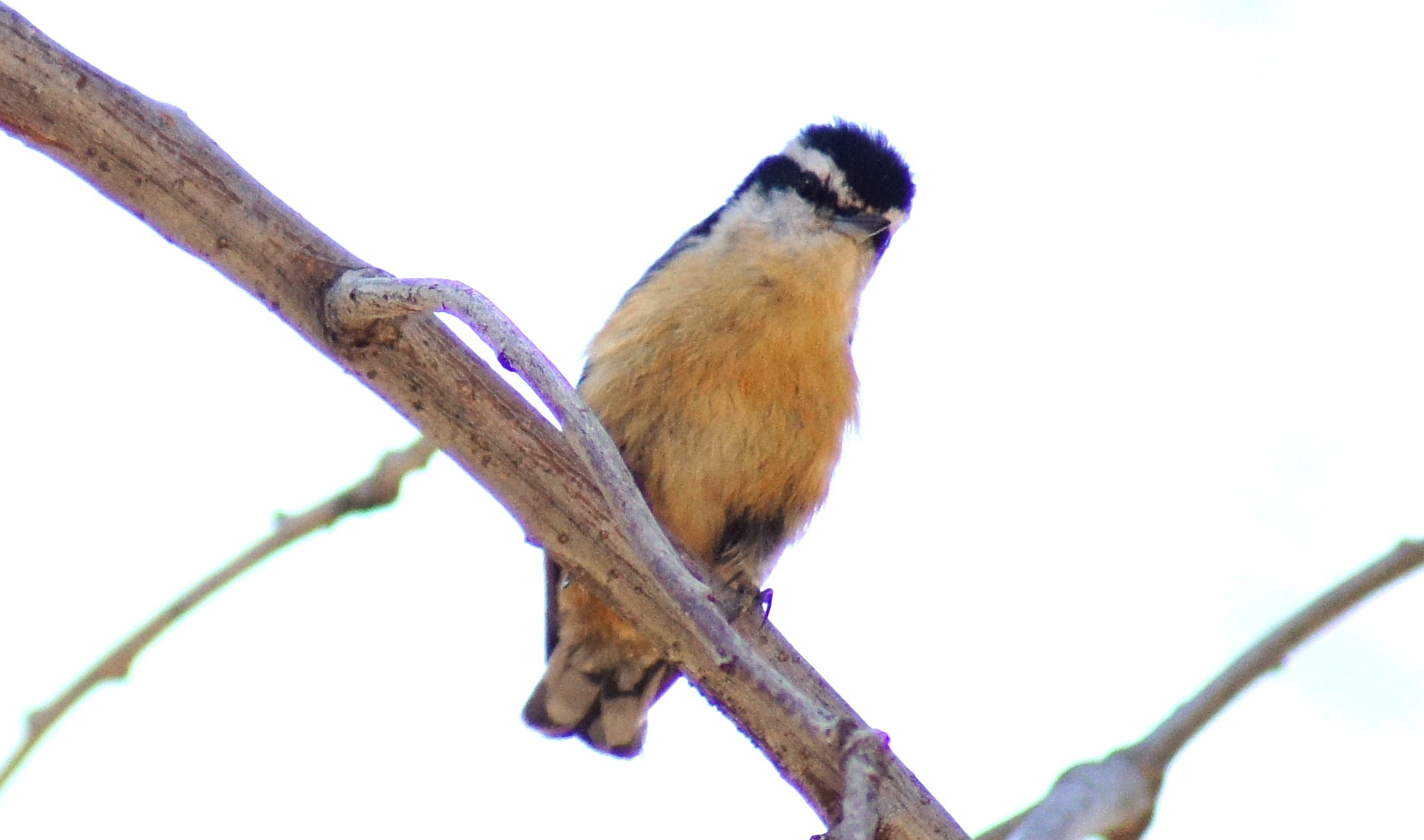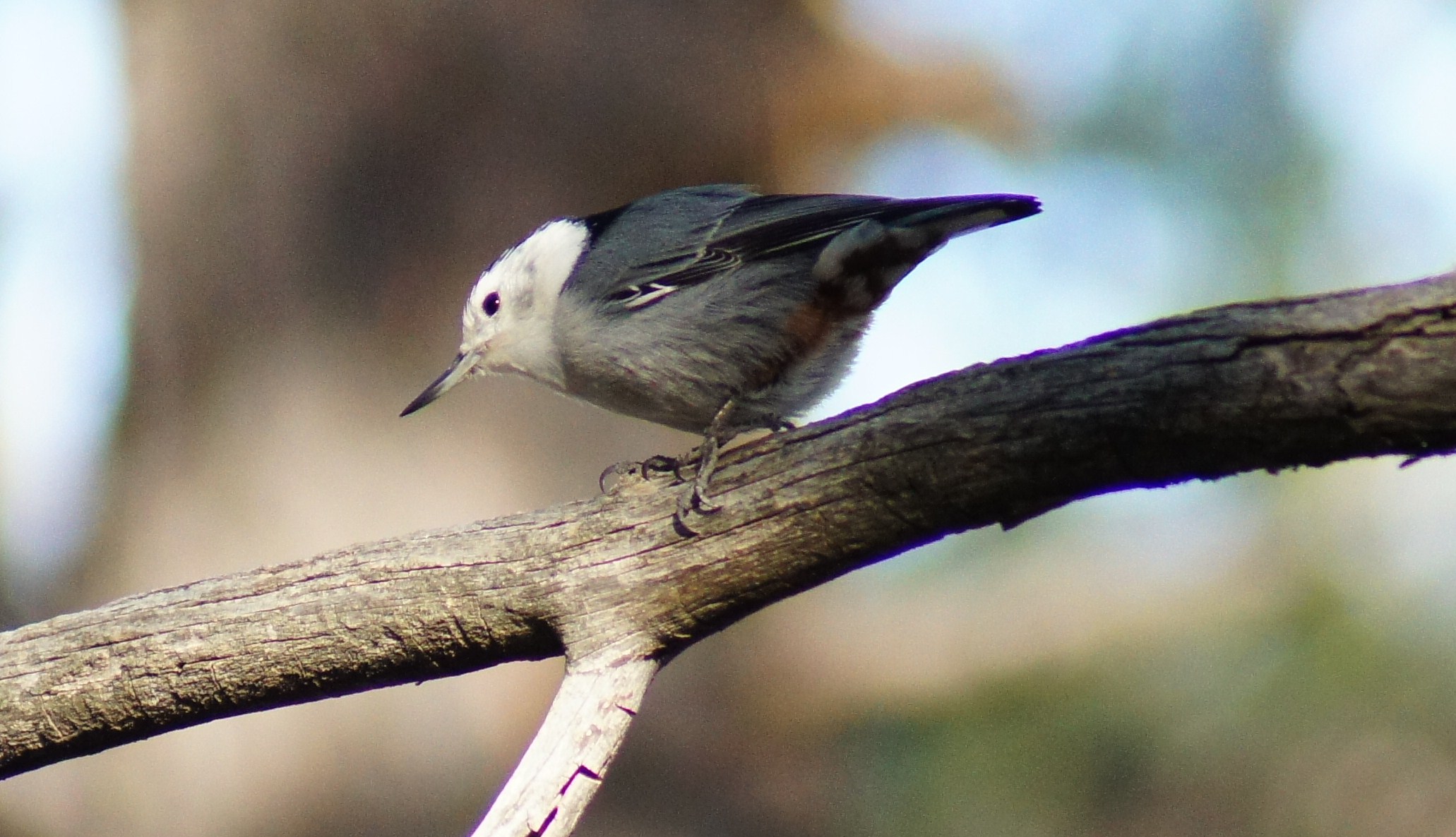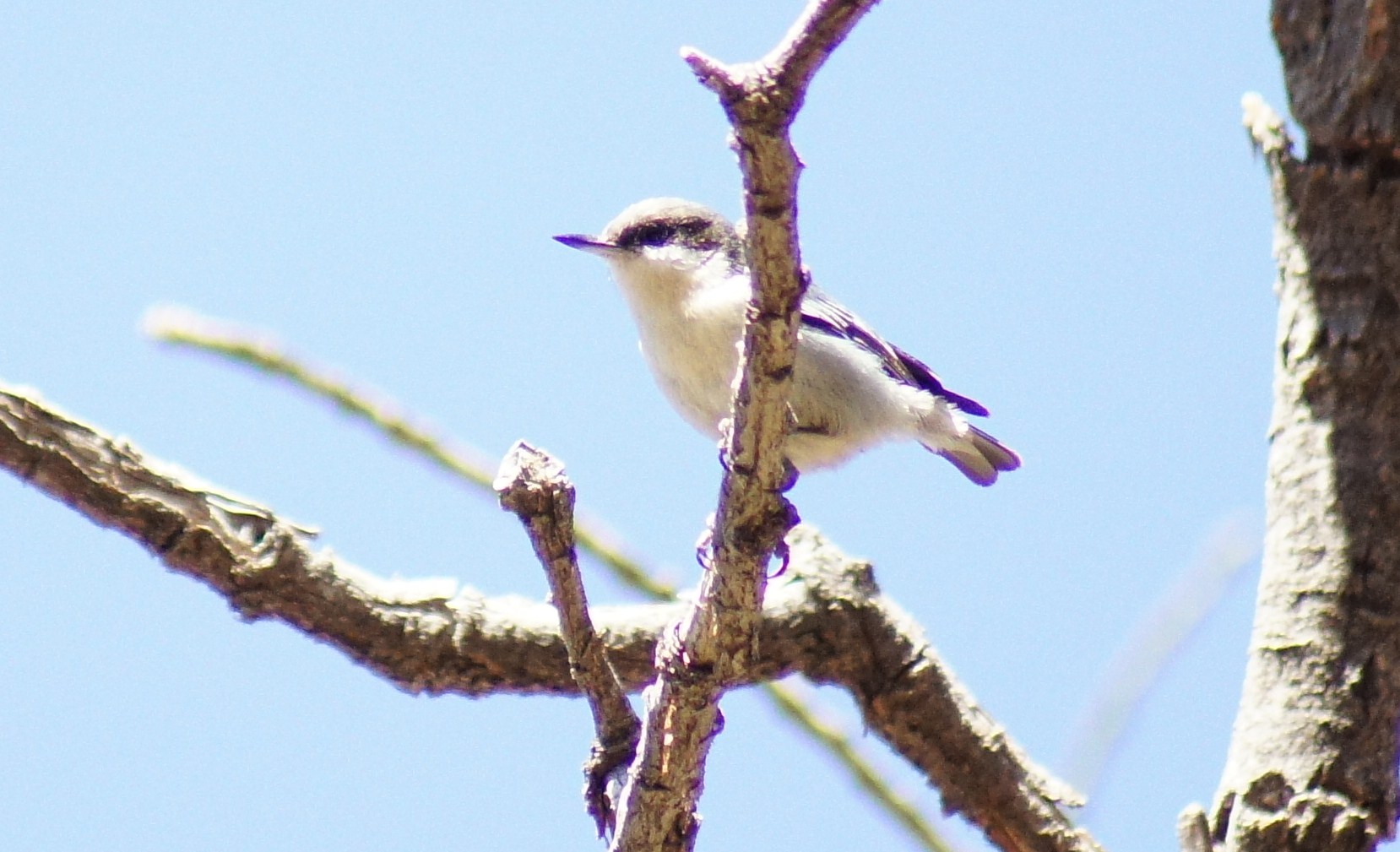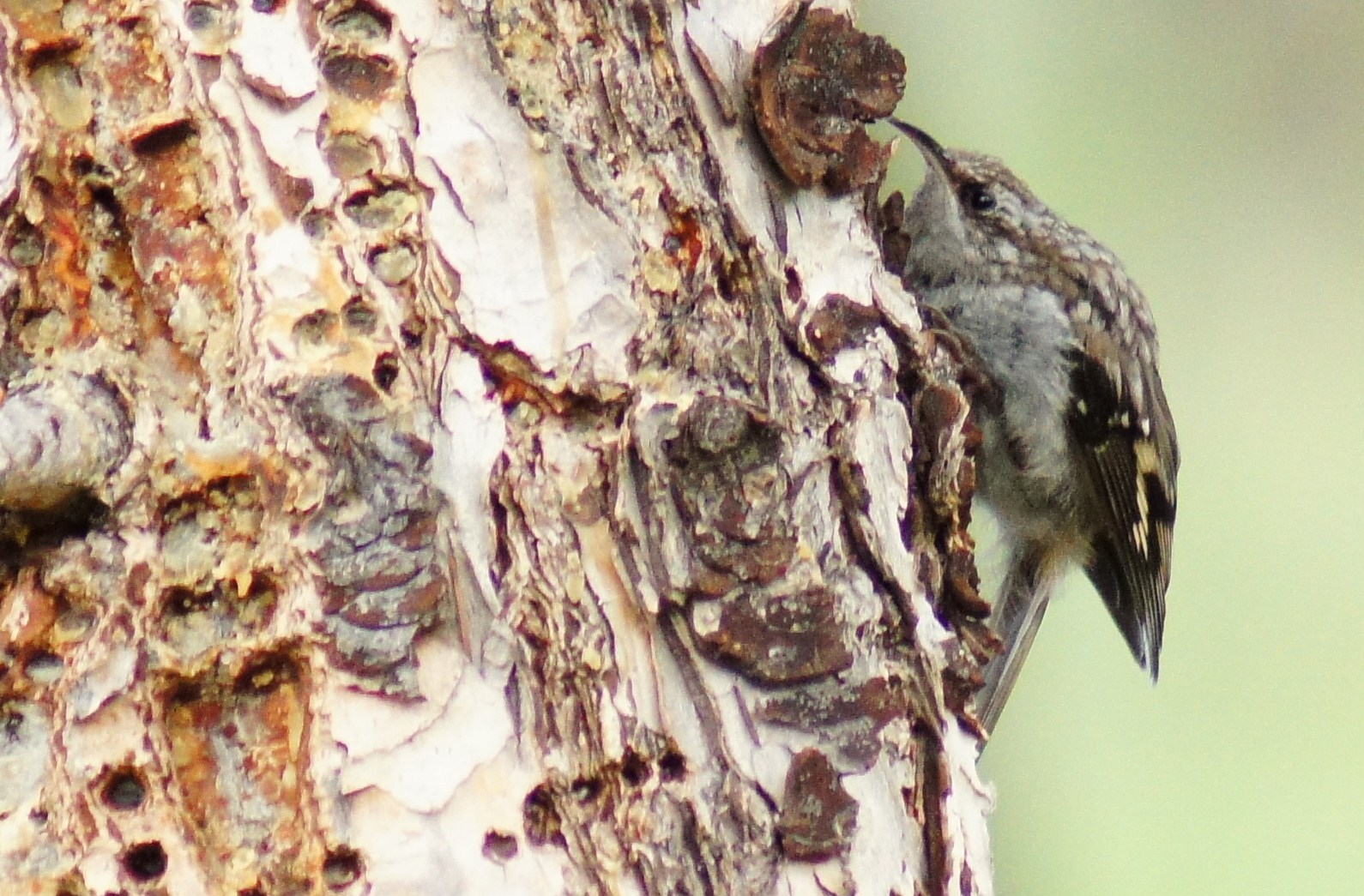Nuthatches and Creepers of Maricopa County
Red-breasted Nuthatch Sitta canadensis
This small bird inhabits dense and coniferous forests throughout much of the west and Canada as a year round resident. They also have a wide wintering range in the east. Red-breasted Nuthatches can be harder to see at times, as they tend to feed higher in the trees. It's loud trumpet like voice can help locate this bird in the dense forests it lives in. This cavity nester feeds on insects as it searches trees, and in colder months, it eats conifer seeds. In Maricopa County, the Red-breasted Nuthatch is fairly common in the Transition Zone forests found in the Highway 87 Area (Area 1) throughout most of the year. Out of the forested hotspots mentioned, Slate Creek Divide is the only location with appropriate breeding habitat for this bird. However, Red-breasted Nuthatches do spend a lot of time in the open pine and oak forests of Mount Ord during the non-breeding season, as some of the population moves south from the extreme north during some winters. Numbers are present annually on Mount Ord in fall and winter, sometimes abundantly. Four Peaks Wilderness is also a good place to look. In some years when cone crop is very bad in the north and fails to produce food for Red-breasted Nuthatches, they are sometimes found in the Lower Sonoran Zone as they need to find food source. In these years, they can be found in desert riparian woodlands, which is an odd sight.

White-breasted Nuthatch Sitta carolinensis
The White-breasted Nuthatch is common and widespread throughout much of North America, where it favors forests. These forests may be open and dry oak and pine woodlands or they may be moist mixed conifer and fir forests of the far north. Considerably the largest of the nuthatches, this bird is seen climbing down trees head first, in search of food. Like the Red-breasted Nuthatch, the White-breasted Nuthatch feeds on insects and seeds for much of it's diet. In Maricopa County, the White-breasted Nuthatch is a breeder and year round resident in the higher elevation forests in the Highway 87 Area (Area 1). Birding locations they are found at during the year are Mount Ord, Slate Creek Divide, and Four Peaks Wilderness. White-breasted Nuthatches also have years where they go into lower elevations more often. In winter, numbers in Maricopa County's higher elevations increase, and they may show up in riparian forests in the lowlands and often mesquite bosques.

Pygmy Nuthatch Sitta pygmaea
This tiny nuthatch is found in flocks, where birds have family groups that stick together. Pgymy Nuthatches are cavity nesters (like all nuthatches), where up to five birds roost together in one hole. They are found in coniferous forests throughout western North America (mainly in Lower 48), especially in forests dominated by ponderosa pine. These birds are often noisy and vocal in their flocks, making them very easy to locate. The Pygmy Nuthatch is found in pine forests as well as thick mixed conifer forests throughout Arizona, where it is common. Maricopa County has good habitat for Pygmy Nuthatch in the forested pine and oak woodlands in the Highway 87 Area (Area 1). Despite the fact the habitat is good, the Pygmy Nuthatch is uncommon to rare and can be very hard to find in this region. It is a permanent resident in it's range and a small part of the population does migrate. Birds seen in Area 1 at Mount Ord, Slate Creek Divide, and Four Peaks Wilderness are probably migrants, wintering birds, or birds that have moved south because of limited food source. Fall and winter are probably the most expected time frames to find this bird in Maricopa County's forests.

Brown Creeper Certhia americana
True to it's name, the Brown Creeper is a brown bird that creeps slowly up trees. This small bird is often difficult to see, due to it's coloration that helps camouflage it's presence well. It does have a distinctive song however, and a high pitched call that give away it's location. It feeds by creeping up one tree starting from the bottom, and when finished with that tree, it goes to the next tree and repeats the process. Brown Creepers are found throughout much of North America, whether breeding or wintering. Their favored habitats are moist forested areas, especially thick forests of mixed firs and conifers. The eastern half of Arizona especially holds forests that Brown Creepers frequent. They are harder to find as a breeder in Maricopa County, but Slate Creek Divide (Area 1) holds good habitat where Brown Creepers breed in small numbers. The favored habitat at Slate Creek consists of a mix of pine, Douglas fir, oaks, and sycamore trees, which is similar to that of our southeastern Arizona canyons. Brown Creepers are most easily found in the county from late fall and through all of winter, as some of it's population migrates south. Transition Zones of Mount Ord, Slate Creek Divide, and Four Peaks Wilderness (Area 1) are good places to look, but Creepers also really like lowland riparian habitats during winter and mesquite bosques. Also look for them in mixed flocks of smaller birds, such as kinglets, titmice, and warblers.

Back to What Bird Are You After? main page. |
